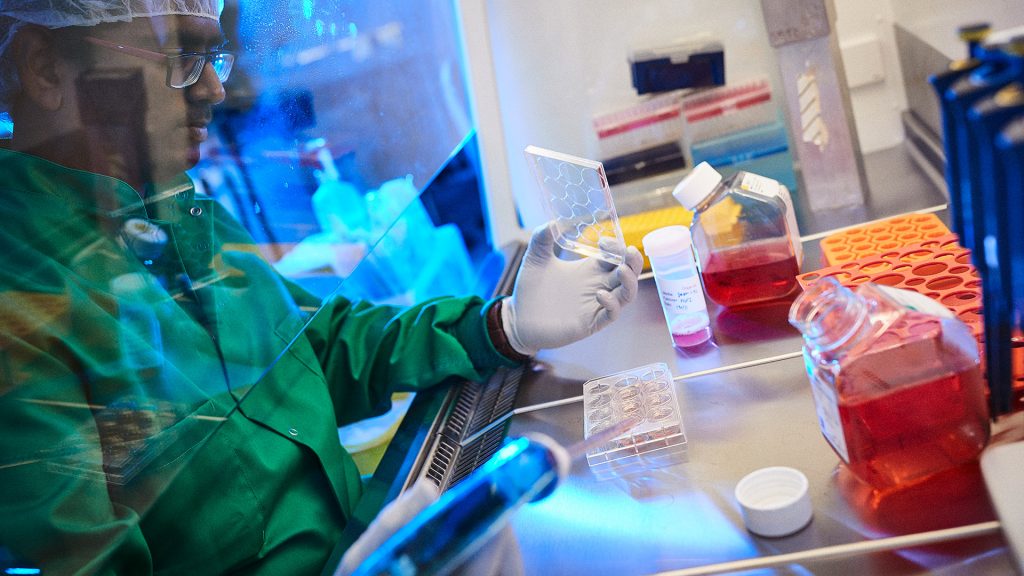The Novo Nordisk Foundation has awarded grants of DKK 10 million each to 12 research leaders within endocrinology and metabolism. The grants are part of the Foundation’ Research Leader Programme, which supports ambitious, original research projects and the continuing development of top researchers.
Discovery of single and structural variants in genes that affect the development of childhood diabetes with the aim of improving the diagnosis and treatment of childhood diabetes and providing novel potential targets for therapeutic innovations. Development of bone fracture type-specific diagnostic tools and treatments facilitating a personalized anti-fracture therapy to improve the prevention, diagnosis and treatment of osteoporosis and related fractures. Creating new knowledge and understanding of the most common chronic liver disease in the world – nonalcoholic fatty liver disease – and the mechanisms underlying its pathogenesis to be able to identify reliable biomarkers and develop novel therapies.
These are the overall objectives of 3 of 12 ambitious research projects within endocrinology and metabolism that have just received grants of DKK 10 million each from the Novo Nordisk Foundation. The grants are awarded for research within endocrinology and metabolism, with the overall aim of understanding the human organism and the mechanisms underlying health and disease at the basic and clinical levels.
The grants last 5 years and aim to give the researchers the opportunity to pursue ambitious and relevant projects through a targeted and long-term grant that will ensure focus, continuity and stability in their research.
The grants target research leaders at different stages of their careers, and four grants were awarded in each of the following categories:
- Excellence Emerging Investigators. Young promising research leaders wanting to establish, or are in the process of establishing their own research group and research profile.
- Ascending Investigators. Talented, established research leaders at the associate professor level.
- Distinguished Investigators. Professors of the highest international standing and calibre.
The Foundation awarded at least one grant in each of the three categories to an active clinical researcher.
The grants were awarded in open competition following a call for applications. The Foundation’s Committee on Endocrinology and Metabolism assessed all 91 applications received.
The 12 grants were awarded as part of the Foundation’s Research Leader Programme. The Programme supports talented research leaders at all stages of their careers and aims to support the continuing development of top researchers. The Foundation recently announced that is has awarded a total of DKK 413 million to 44 research leaders under the Programme. Read the news article here.
Grants under the Programme are awarded within four scientific fields: endocrinology and metabolic research; biotechnology-based synthesis and production research; clinical and translational research; and bioscience and basic biomedical research.
The 2019 grants recipients within endocrinology and metabolism are:
Excellence Emerging Investigators
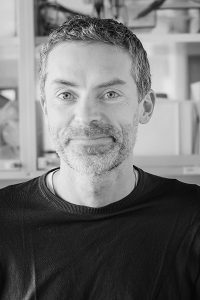
Morten Frost Nielsen, 42, Clinical Associate Professor
Odense University Hospital, Steno Diabetes Center Odense and Department of Endocrinology, University of Southern Denmark
Grant amount: DKK 9,987,120
Project title: GLucagon-like peptide One & BonE (GLOBE): Studies on the role of GLP1 as a nutrient sensing mechanism regulating bone metabolism
Morten Frost Nielsen says: “Bone is an active tissue that is remodelled by resorption and formation of bone throughout life. Imbalanced bone remodelling may impair bone and increase fracture risk, e.g. osteoporosis and type 2 diabetes (T2D). Glucagon like peptide-1 (GLP1), a gut-secreted hormone, promotes insulin secretion when food is consumed and improves bone formation in animal studies. The hypothesis of Morten Frost and his group is that GLP1 acts as a nutrient sensor that signals availability of nutrients for bone remodelling. This project aims to determine the effects of GLP1 on bone formation, mass and strength by investigating the effects of treatment with GLP1 and GLP1-like drugs, currently used to treat T2D, on bone cells and bone in healthy individuals and T2D patients with low bone mass. If GLP1 and GLP1-like drugs are beneficial to bone in humans, this investigation will help repurposing GLP1-like drugs as a novel treatment of patients with conditions associated with increased fracture risk including osteoporosis and T2D.”

Jakob G. Knudsen, 36, postdoctoral fellow
Jakob will relocate from Oxford University to the Department of Biology, University of Copenhagen.
Grant amount: DKK 9,999,821
Project title: Metabolic specialisation of α-cells: In search of pathways causal to hyperglucagonemia
Jakob G. Knudsen says: “Type 2 diabetes (T2D) affects more than 400 million people worldwide. Despite great efforts, we have so far been unable to curb the increasing prevalence. While insulin resistance and lack of insulin secretion seems to be the major cause of T2D, it has become clear that the hormone glucagon also plays a critical role. Glucagon is normally secreted to increase plasma glucose levels during fasting but in T2D, glucagon suddenly appears at higher plasma glucose levels and causes hyperglycemia. In this project, Jakob Knudsen will advance single cell resolution microscopy and genetically modify models to determine how α-cell metabolism and glucagon secretion changes in response to metabolic challenges. this way we can explore the mechanisms underlying glucagon secretion in T2D. The understanding of α-cell metabolism and the basic mechanism of glucagon secretion will not only benefit diabetes research, but also lead to new possible treatments for T2D.”
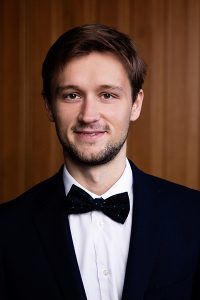
Nicolai Wewer Albrechtsen, 31, Senior Resident
Department of Clinical Biochemistry, Rigshospitalet and Department of Biomedical Sciences, University of Copenhagen
Grant amount: DKK 9,767,500
Project title: The Postprandial Human Liver
In this project Nicolai Albrechtsen aim to understand how the human liver ‘works’ when we eat and which biochemical systems within the liver that are impaired in obese individuals and patients with liver diseases. By bridging an advanced clinical setup in humans to state-of-the-art biochemical techniques such as mass-spectrometry and machine learning the goal is to provide the first ‘postprandial human liver atlas’. Evaluating liver profiles of healthy compared to those with liver disease may guide us to a new understanding of how the human liver works and thereby also aid in the identification of new drug targets for liver diseases.
Nicolai Wewer Albrechtsen says: “Overload of nutrients and sedentary life predisposes to obesity and liver diseases. Every time we eat, thousands of biochemical processes are activated in order to help our body digest carbohydrates, proteins and fat. The liver is of particular importance for such as it filters and regulates the amount and type of nutrients that reaches our organs”.
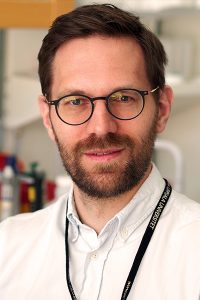
Olof Idevall-Hagren, 38, Senior Researcher
Department of Medical Cell Biology, Uppsala University
Grant amount: DKK 9,388,746
Project title: The β-cell primary cilium is a unique signaling compartment
Olof Idevall-Hagren says: ”Most cells in the human body are equipped with a primary cilium. This small protrusion function as an antenna that senses changes in the environment and transmit this to the cell body. Defects in primary cilia is the underlying cause of ciliophaties, a group of diseases characterized by diabetes-like symptoms. If there are direct connections between cilia function and diabetes is not known. We have developed tools that enable visualization of activity within primary cilia of insulin-secreting cells and found that these structures are engaged under conditions that modulate insulin secretion. Olof Idevall Hagren will now use these techniques together with methods that suppress or amplify this activity and determine the importance of primary cilia for insulin production and secretion. Our hypothesis is that these antennae coordinate different responses, e.g. insulin secretion, between cells and that defects in cilia function will have a negative impact on these responses and contribute to diabetes.”
Ascending Investigators

Tine Willum Hansen, 50, Senior Researcher
Steno Diabetes Center Copenhagen, Complications Research
Grant amount: DKK 9,875,660
Project title: Deep phenotyping of the heart with advanced imaging modalities in type 2 diabetes – implications for pathophysiology and prognosis (DIA-HEART study)
Tine Willum Hansen says: “The purpose of this study is to identify patients with type 2 diabetes at high risk of developing cardiovascular disease and to get a better understanding of the coexistence and interplay between diabetic kidney disease and severity of cardiovascular disease. To obtain this we will enroll 900 patients for a cardiac positron emission tomography (PET) scan. This is an imaging test that enable the calculation of 1) the ability to increase blood flow in the heart during stress; 2) the calcification of the large vessels in the heart; and 3) the pump function of the heart. After 5 years we will perform register-based follow-up and this will allow us to investigate the link between these three important aspects of the function of the heart and development of cardiovascular disease. The deeply characterization of structural and functional changes in the vessels of the heart will be done in two sub studies.”

Jorge Ruas, 47, Associate Professor
Department of Physiology and Pharmacology, Karolinska Institutet
Grant amount: DKK 10,000,000
Project title: T.R.A.I.N., a novel target in Non-Alcoholic Fatty Liver Disease (NAFLD): Disease Mechanisms, Biomarkers, and Therapeutics
Jorge Ruas explains: “Nonalcoholic fatty liver disease (NAFLD) is the most common chronic liver disease in the world. It is estimated to affect up to one third of the adult population in industrialized countries and 70-80% of obese patients with diabetes. Over one third of these patients progress into the most severe disease stage, nonalcoholic steatohepatitis (NASH). NASH dramatically impairs liver function and is a major risk factor for cirrhosis, hepatocellular carcinoma, and cardiovascular disease. There are no approved pharmacological treatments for NASH and drug development is challenging since the mechanisms underlying its pathogenesis are not understood. There are no biomarkers to diagnose and monitor NAFLD/NASH progression. We have identified a protein with previously unknown function (TRAIN) and discovered that it is a major driver of inflammation and fibrogenesis. With this project we aim to understand how TRAIN leads to NALFD/NASH, to identify disease biomarkers and to develop novel therapies for NAFLD/NASH.”

Mattias Carlstrom, 40, Associate Professor
Department of Physiology and Pharmacology, Karolinska Institutet
Grant amount: DKK 8,610,000
Project title: Effects of dietary nitrate supplementation in type 2 diabetes and associated liver steatosis
Metabolic disorders including type 2 diabetes (T2D) have reached epidemic levels in the industrialized world and is closely coupled with overweight and obesity. It is well known that a diet rich in vegetables has favorable cardiometabolic effects, however, the protective component(s) in such diet remain unclear.
Mattias Carlstrom says: “We have demonstrated that supplementation with inorganic nitrate, which is highly abundant in green leafy vegetables, has favorable effects on cardiovascular and metabolic functions”. The mechanisms are linked to increased nitric oxide production and reduction of oxidative stress. This translational project explores the therapeutic potential, and underlying mechanisms, of dietary nitrate treatment in T2D and associated adverse complications. Results from this proposal may lay a foundation for therapeutic use of nitrate alone or in combination with antidiabetic drugs in T2D and may also lead to novel and specific dietary approaches to prevent the disease.”

Kim Rewitz, 44, Associate Professor
Department of Biology, University of Copenhagen
Grant amount: DKK 9,985,969
Project title: Identification of signals secreted by the gut that regulate food intake and metabolism
Kim Reqitz says: “The twin epidemics of diabetes and obesity are major, fast-growing global health challenges. Some of the most promising and innovative approaches to treat these conditions involve manipulating hormonal signals from the gastrointestinal tract. The gut talks to the brain and other organs by releasing hormones into the blood that relay how hungry we are, what we should or should not eat, and whether the body should store energy or burn it. Although some important gut hormones have been discovered, over 2,000 proteins with potential hormonal function exist, representing a significant unexploited resource for the discovery of new therapies against metabolic disorders. The aim of this project is to systematically identify the hormones used by the gut to communicate with the brain and other tissues to regulate appetite and metabolism. Identifying gut hormones that regulate hunger and energy storage may provide new treatments for diabetes and obesity.”
Distinguished Investigators
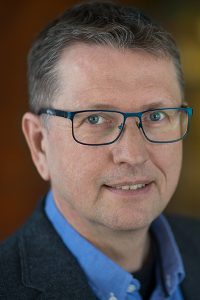
Claes Ohlsson, 54, Professor and Chief Physician
Sahlgrenska University Hospital, Gothenburg
Grant amount: DKK 10,000,000
Project title: Personalized anti-fracture treatment
Claes Ohlsson says: “With increasing age of the population, we are facing a substantial increase in bone fragility fractures, which account for considerable disease burden and costs. Therefore we aim to improve the prevention, diagnosis and treatment of osteoporosis and related fractures. We will identify human genetic signals for a variety of specific fracture-related phenotypes and translate these to novel mechanisms regulating fracture risk. The clinical usefulness of the most promising genetic markers will be evaluated in the fracture risk prediction tool FRAX® that, according to national guidelines in Sweden and many other countries, should be used to aid in fracture risk prediction and thereby in the selection of individuals who would benefit most from osteoporosis treatment. Our vision is to develop fracture type-specific diagnostic tools and treatments facilitating a more personalized anti-fracture therapy.”
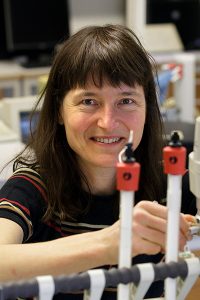
Sara Linse, 56, Professor
Department of Biochemistry and Structural Biology, Lund University
Grant amount: DKK 10,000,000
Project title: Unravelling the IAPP aggregation mechanism for the design of inhibitors that specifically suppress toxicity and cell death in type 2 diabetes
Sara Linse says: “Type-2 diabetes affects over 400 million people world-wide and is linked to aberrant behavior of the hormone IAPP. IAPP is produced, stored and released together with insulin, which is needed for our sugar metabolism. In most cases of type-2 diabetes, IAPP is found in aggregated form. This causes death of the insulin-producing cells. Current efforts to develop inhibitors against IAPP aggregation are spent without knowledge of the underlying mechanism. This is where this project comes in. We will first solve the mechanism in term of which steps happen and which of these steps cause death of insulin-producing cells. Inhibitor design will then target exactly these steps to limit cell death. This is important as targeting the wrong steps can even lead to increased cell death. We will optimize all parts of the experiments needed to find the mechanism in the relevant biological fluid, and the action of each potential inhibitor under conditions relevant to the situation in the human body.”

(photo Kim E. Andreassen, University of Bergen)
Pål Njølstad, 57, Professor
Department of Clinical Science and Center for Diabetes Research, University of Bergen
Grant amount: DKK 10,000,000
Project title: Towards personalized therapies in childhood diabetes: Role of rare genetic variants for diagnosis and treatment
Pål Njølstad says: “Childhood diabetes infers a great burden on affected children and their parents due to complicated and painful treatment, and the development of diabetes-associated complications. In many clinics around the world, children with diabetes are generally thought to suffer from type 1 diabetes, not further investigated, and treated with insulin for life. Recent advances in genetics indicate that many children with apparent type 1 diabetes may suffer from a genetic subtype of diabetes which may mean oral drugs are better than insulin injections.
In this study we will use new genetic tools to identify rare genetic variants in childhood diabetes, to shed light on their functional role in cell models, and to use this information for improved treatment of children with diabetes. Children carrying mutations in genes involved in insulin secretion will be tested whether they can switch treatment from insulin to sulfonylurea tablets, thus providing safe, painless, and personalized treatment.”

(photo by Tomas Bertelsen)
Marja Jäättelä, 56, Professor
Unit of Cell Death and Metabolism, Danish Cancer Society Research Centre and Department of Cellular and Molecular Medicine, University of Copenhagen
Grant amount: DKK 9,958,200
Project title: Effect of dietary fatty acids on the architecture and function of murine tissues and cells
With this project, Marja Jäättelä and her group will map how different types of dietary fats are used as building blocks in cells and how they affect their functions. The ultimate aim of the project is to enable a better use of diets in the prevention and treatment of various diseases.
Marja Jäättelä says: “We know today that there are different types of fats in our food and that they have both good and harmful effects on our health. But we do not know so much about how these fats distribute in our body or how they affect different tissues. Therefore, we wish to investigate how different types of fats in food are used in the body. For this purpose, we will feed mice with excess of specific dietary fatty acids and then determine the fat composition of cellular membranes and other lipid-containing molecules in various tissues.”
About the Novo Nordisk Foundation
The Novo Nordisk Foundation is an independent Danish foundation with corporate interests. It has two objectives: 1) to provide a stable basis for the commercial and research activities of the companies in the Novo Group; and 2) to support scientific, humanitarian and social causes.
The vision of the Foundation is to contribute significantly to research and development that improves the lives of people and the sustainability of society. Since 2010, the Foundation has donated more than DKK 20 billion (€2.7 billion), primarily for research at public institutions and hospitals in Denmark and the other Nordic countries. Read more at www.novonordiskfonden.dk/en
Further information
Susanne Hede, Scientific Officer, phone +45 3527 6629, suhq@novo.dk
Christian Mostrup Scheel, Senior Press Officer, phone: +45 3067 4805, cims@novo.dk

